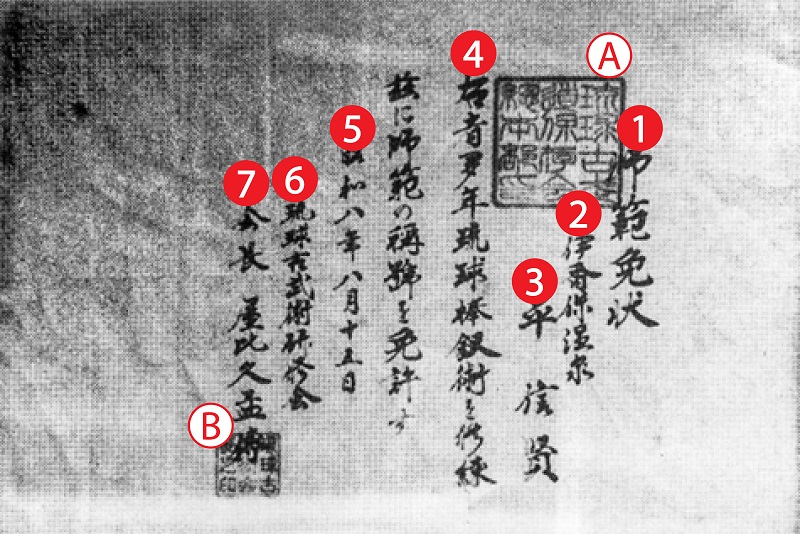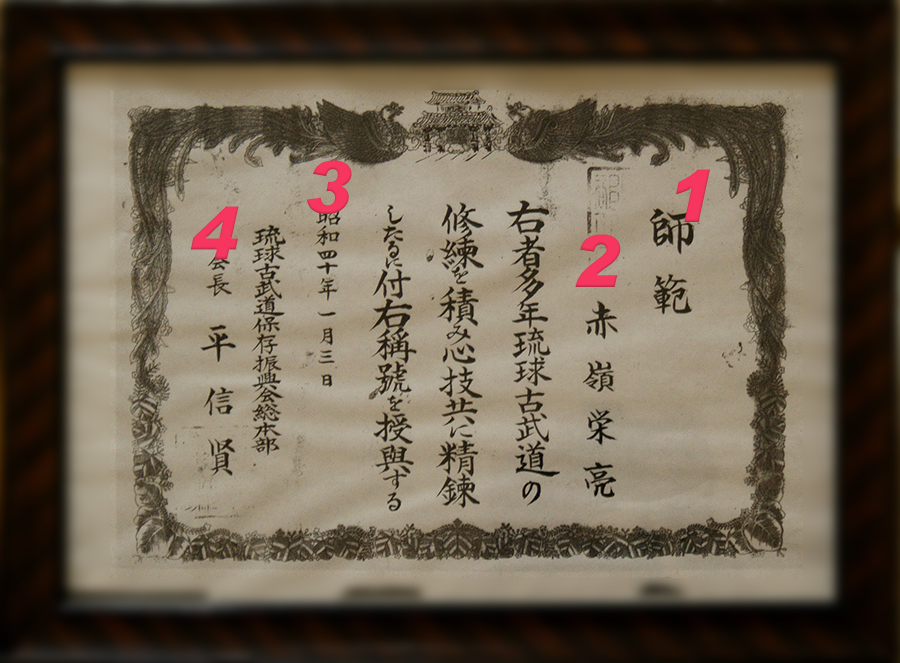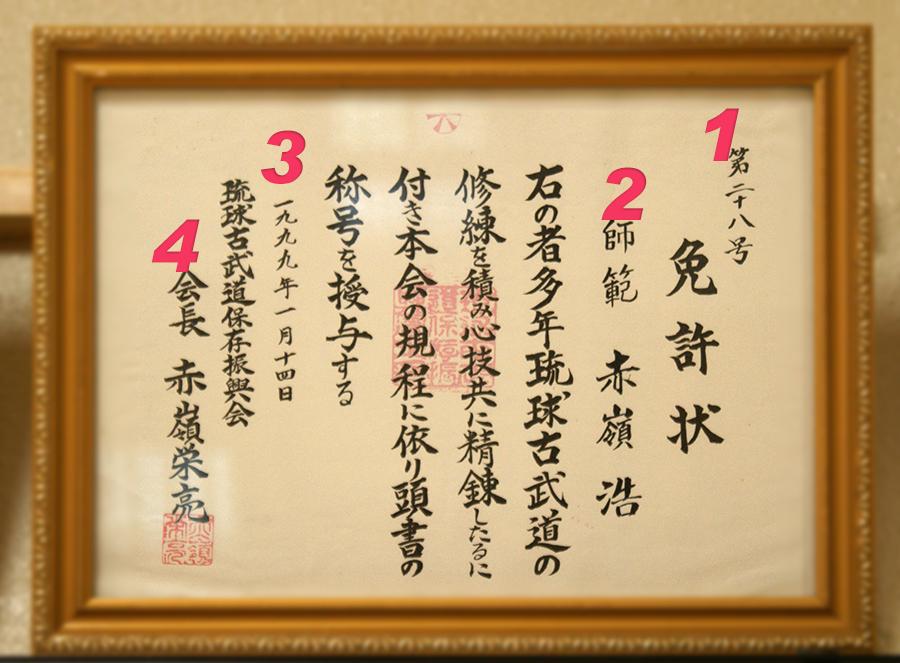Recently, there was a social media discussion about the difference between sensei and shihan.
Both sensei and shihan mean teacher, but while sensei is used extensively in general, shihan is an older term used particularly in the world of budō and other traditional arts such as calligraphy, flower arranging, etc. As I understand it, it is an official permission to teach a school’s content and it is a typical Japanese thing.
When did the shihan license enter the Okinawan budō scene?
On Okinawa, some schools use it, others don’t. For instance, in the Kyūdōkan, I was told that the titles of renshi, kyōshi, and hanshi are awarded, but no shihan licenses.
On the other hand, and as described previously, the Association for the Preservation and Promotion of Ryukyu Kobudo (Ryūkyū Kobudō Hozon Shinkōkai) awarded shihan licenses.
These shihan licenses began when Yabiku Mōden awarded a shihan license to Taira Shinken, dated August 15, 1933.

The teachers diploma in bō– and saijutsu granted to Taira Shinken by Yabiku Mōden, dated August 15, 1933, published in the “New and expanded Encyclopedia of Ryūkyū Kobudō” supervised by Inoue Kishō and published by Yōju Shorin in Ginowan 1997.
This was continued in 1965, when Taira Shinken awarded shihan license to Akamine Eisuke (1925 – January 13, 1999).
More than 30 years later, it was continued with another shihan license, this time for Akamine Hiroshi sensei, son of Eisuke and current director of the Shimbukan.
The certificate is number 28, so several shihan licenses were given out in the name of the association over the years.
The issuing date is January 14, 1999, signed by Akamine Eisuke in the role as the president of the Association for the Preservation and Promotion of Ryukyu Kobudo (Ryūkyū Kobudō Hozon Shinkōkai).
According to the official association regulations mentioned earlier, shihan license was given to those who have passed the 5th dan examination, so this must have been the accompanying rank.
It therefore seems that shihan licenses in Okinawan traditions started first Yabiku Mōden to Taira Shinken in 1933, while both were in Japan. After the war, Taira introduced it to Okinawa.
I hope this was insightful for those interested in Okinawna martial arts associations.
© 2023, Andreas Quast. All rights reserved.


